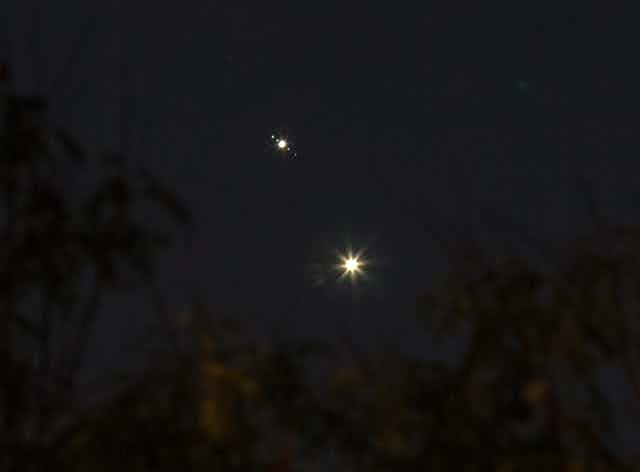If you look to the west just after sunset tonight you’ll be greeted with an astronomical wonder that is just as impressive today as it was in ancient times: a conjunction of the two brightest planets in the night sky.
Venus and Jupiter have been dancing their way across the sky for the last month. Tonight they’ll slip past each other on their closest pass in over a decade.
Plus, if you’re fortunate enough to be in the southern hemisphere, you’ll be perfectly placed to see the cosmic conjunction in all its glory. Because the Sun sets so early this close to midwinter in the southern hemisphere, the two planets will be visible in the early evening sky, making the conjunction easy to see during the rush hour commute.
Beyond this, because the planets are further south than the sun in the sky, they will be visible for longer, and be higher in the sky, for southern observers. In fact, they will remain above the horizon for more than three hours after sunset, giving you ample time to take in this spectacular show from Australia.

Conjunctions between Venus and Jupiter are not uncommon, but their occurrence depends on a quirk of our relative positions in the solar system.
Venus is closer to the sun than we are, while Jupiter is much farther away. For a conjunction to occur, the planets have to line up. So at the moment, both planets are essentially “off to one side of the solar system”, from our point of view. Venus lies in the foreground, just over 75 million kilometres away, whilst Jupiter lurks far beyond, currently some 900 million kilometres distant.
That also means that conjunctions can only be seen for a fairly short time after sunset before they are blocked by the Earth’s rotating bulk. Venus never creeps too far from the sun in the sky – only around 47 degrees at its greatest separation – and so conjunctions between the two planets must always occur in the evening or morning sky.
Future skies
Over the next couple of weeks, the two planets will gradually move apart in the sky. In doing so, they will set the scene for another stunning conjunction. On July 18, Venus will sit close to Regulus, the brightest star in the constellation of Leo, with Jupiter and a crescent Moon lurking very nearby.
And if you miss this year’s conjunction fest, never fear: the king and queen of planets will brush cheeks again next year, in August 2016.
One last thing: if you have the chance, take a look at the two planets through a small telescope or large binoculars. Venus, closer to the sSun than we are, displays phases, just like the Moon. With a small telescope, you should see a clear crescent.
Jupiter, by contrast, is way beyond the sun, and so will display a clear solid disk. But it isn’t alone. Even with small binoculars, Jupiter’s four brightest satellites – named the Galileans, after Galileo Galilei – are easily seen.

